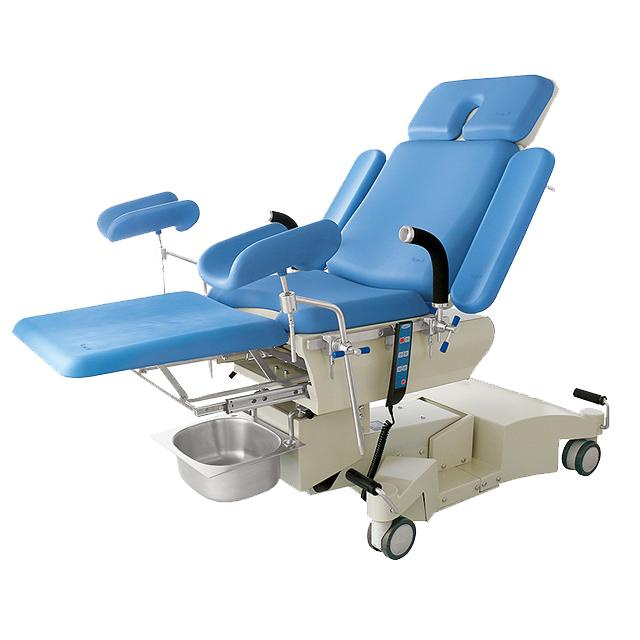Flood Preparedness: Your Guide For Severe Weather Awareness Week (Day 5)

Table of Contents
Understanding Flood Risks and Your Location
Knowing your flood risk is the first step in effective flood preparedness. A thorough flood risk assessment is essential, and thankfully, resources are available to help you understand your specific vulnerabilities. Understanding your flood zone is critical for determining your level of risk. Many areas have a history of flooding, even those not traditionally considered high-risk areas.
- Check your property's flood risk on FEMA's flood map: The Federal Emergency Management Agency (FEMA) provides a comprehensive flood map service that allows you to pinpoint your property's flood zone. This free resource is invaluable for understanding your risk level. Search "FEMA Flood Map Service" to access this tool.
- Understand local flood history and common flood sources: Research your area's history. Have there been significant floods in the past? Understanding the common causes – river overflow, heavy rainfall, dam failure, coastal storm surge – helps you anticipate potential threats.
- Identify potential flood hazards in your area: Look for potential problems like poor drainage, nearby waterways prone to overflow, or areas with a history of landslides that could trigger flooding.
- Consider elevation and proximity to water bodies: The closer your property is to a river, lake, or ocean, the greater your risk of flooding. Higher elevation offers some protection but doesn't guarantee safety.
Creating a Flood Preparedness Plan
A comprehensive flood preparedness plan is vital. This isn't just about having a few sandbags; it's about anticipating various scenarios and having strategies in place. A well-defined evacuation plan and a robust communication system are key components of this plan.
- Develop an evacuation plan including multiple routes and meeting points: Plan multiple evacuation routes in case one becomes blocked. Designate a meeting point outside the flood zone where your family can reunite.
- Identify a safe location to evacuate to (friend's house, designated shelter): Having pre-arranged accommodations with friends or family outside the flood zone is crucial. Know the location of your nearest designated emergency shelter.
- Establish a communication strategy with family and neighbors: Identify primary and secondary contact methods. Cell service may be disrupted during a flood. Consider a pre-arranged meeting place or a method of contact that doesn't rely on cell towers.
- Create a contact list with emergency numbers: Include FEMA, local emergency services, your insurance provider, and trusted contacts. Keep this list readily accessible.
- Pack an emergency kit (food, water, medications, important documents): Your emergency kit should contain enough supplies to last for several days. Remember essential medications, copies of important documents, and comfortable clothing.
Protecting Your Property from Flood Damage
Taking proactive steps to protect your property is a key aspect of flood mitigation. Implementing simple flood proofing measures can significantly reduce the damage caused by floodwaters. Even seemingly small measures can make a big difference.
- Elevate electrical appliances and valuable items: Move furniture, appliances, and other valuables to higher levels in your home. Consider using waterproof containers to protect sensitive items.
- Install flood barriers or sandbags around your home: Flood barriers can effectively keep water out of your home. Sandbags can be used to reinforce these barriers or to create temporary barriers in vulnerable areas.
- Improve your home's drainage system: Ensure gutters and downspouts are clean and functioning correctly. Consider installing a sump pump to remove excess water from your basement.
- Seal cracks and openings in your foundation: Prevent water from entering your home through cracks in the foundation by sealing them with appropriate materials.
- Consider flood insurance: Even if you're not in a high-risk area, flood insurance offers crucial protection. The cost of flood damage can be overwhelming.
Flood Insurance: A Critical Component of Flood Preparedness
Flood insurance is often overlooked, but it's a crucial component of a comprehensive flood preparedness strategy. While many homeowner's insurance policies don't cover flood damage, separate flood insurance policies are readily available. Understanding your options and benefits is essential.
- Understand your flood insurance options: Research different policy types and coverage levels to find the best fit for your needs.
- Contact your insurance provider to discuss coverage: Discuss your flood risk and the available coverage options. Get quotes to compare different providers.
- Know the limitations of your flood insurance policy: Understand what is and isn't covered by your policy to avoid unexpected costs during and after a flood.
- Check if you're eligible for subsidized flood insurance: Certain communities may offer subsidized flood insurance programs to make coverage more affordable.
What to Do During and After a Flood
Knowing how to react during and after a flood is crucial for your safety and the preservation of your property. Your flood preparedness plan should include detailed instructions for both situations.
- Follow evacuation orders immediately: Don't wait for the water to rise; evacuate as soon as authorities issue an order.
- Avoid floodwaters – they can be contaminated and dangerous: Floodwaters often contain sewage, chemicals, and debris that can cause illness or injury.
- Turn off utilities if instructed to do so: This prevents electrical shocks and further damage to your home.
- Document flood damage with photos and videos: This is vital for your insurance claim. Take detailed pictures and videos of the damage to your property.
- Contact your insurance company after the flood: Report the damage promptly to initiate the claims process.
- Seek professional help for cleanup and repairs: Flood cleanup and repairs require specialized knowledge and equipment. Contact professionals to avoid further damage and health hazards.
Conclusion:
This Severe Weather Awareness Week, taking proactive steps for flood preparedness is crucial. By understanding your flood risk, creating a plan, protecting your property, and knowing what to do during and after a flood, you can significantly reduce the impact of this devastating natural disaster. Don't wait until it's too late; take action today and enhance your flood preparedness strategies. Remember, being prepared is the best way to protect yourself and your loved ones. Start planning your flood preparedness strategy now!

Featured Posts
-
 David Hockney A Bigger Picture Exploring The Iconic Artists Vision
May 26, 2025
David Hockney A Bigger Picture Exploring The Iconic Artists Vision
May 26, 2025 -
 The Art Of The Deal Trump And Republican Negotiations
May 26, 2025
The Art Of The Deal Trump And Republican Negotiations
May 26, 2025 -
 Zwischen Hafengeburtstag Und Roland Kaiser Steht Der Hsv Vor Dem Aufstieg
May 26, 2025
Zwischen Hafengeburtstag Und Roland Kaiser Steht Der Hsv Vor Dem Aufstieg
May 26, 2025 -
 Court Rejects Trumps Claims Against Top Law Firms
May 26, 2025
Court Rejects Trumps Claims Against Top Law Firms
May 26, 2025 -
 Luxury And Politics An Examination Of Presidential Seals High End Watches And Lavish Events
May 26, 2025
Luxury And Politics An Examination Of Presidential Seals High End Watches And Lavish Events
May 26, 2025
